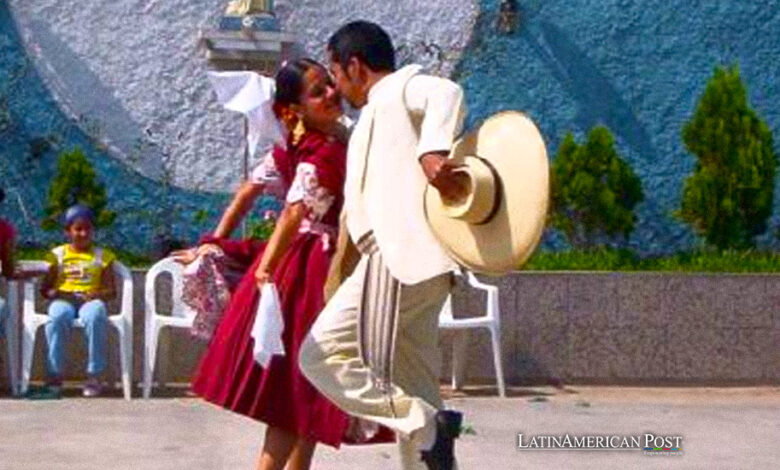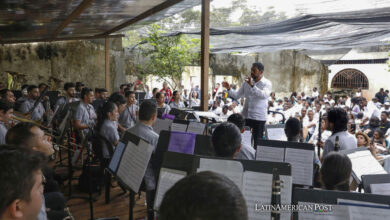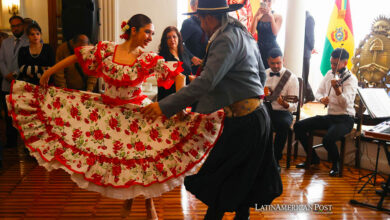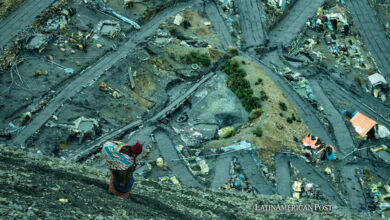Afro-Peruvian Culture: Music, Dance, and Heritage in Lima’s Heart

In the pulsating heart of Lima, the Afro-Peruvian community thrives, weaving a rich tapestry of music, dance, and heritage that colors the city’s cultural landscape. This feature delves into the vibrant contributions of Afro-Peruvians and their relentless efforts to preserve a legacy that transcends generations.
The story of Peru is complete with acknowledging the vibrant tapestry woven by its Afro-Peruvian community. Their presence, though marked by the brutality of the slave trade, has undeniably enriched Peru’s cultural landscape with its captivating music, energetic dance forms, and rich culinary heritage. Today, experiencing a resurgence of interest and recognition, Afro-Peruvian culture pulsates through the heart of Lima, offering a glimpse into the community’s resilience and unwavering spirit.
Historical Context
The arrival of enslaved Africans in Peru in the 16th century marked the beginning of a complex and challenging journey for the Afro-Peruvian community. Despite facing marginalization and oppression, they carved out a space for themselves, expressing their unique cultural identity through music, dance, and storytelling. These artistic expressions, often infused with elements of African traditions and blended with Andean influences, became powerful tools for community building and resistance.
From working in the brutal conditions of sugar and cotton plantations to contributing significantly to the construction of Lima’s iconic landmarks, Afro-Peruvians played a pivotal role in shaping Peru’s social and economic landscape. However, systemic discrimination and a lack of recognition often overshadow their contributions. The struggle for freedom and equality continues today, with the Afro-Peruvian community actively advocating for visibility and inclusion in the national narrative.
Music and Dance
Music and dance are the lifeblood of Afro-Peruvian culture, serving as a powerful medium for expressing joy, sorrow, and cultural identity. The rhythmic beats of the cajón, a wooden box drum, underpin energizing dances like Festejo, characterized by its playful steps and flirtatious gestures. Lando, a slower and more melancholy dance form, reflects on themes of love, loss, and the longing for freedom. Zamacueca, the national dance of Peru with strong Afro-Peruvian influences, showcases a captivating interplay between partners, often accompanied by vibrant clapping and singing.
These distinct rhythms are brought to life by a unique set of instruments. The cajón, often improvised from discarded materials, is the rhythmic foundation. The quijada, a donkey’s jawbone played by clicking the teeth, adds a percussive element. The cajita, a small wooden box with strings, creates melodies that intertwine with the rhythmic tapestry. Mastering these instruments requires dedication and cultural transmission, ensuring the continuation of this rich musical heritage.
Cultural Figures and Contributions
Over the centuries, numerous individuals have emerged as champions of Afro-Peruvian culture, playing a crucial role in its preservation and dissemination. Among them is Susana Baca, a renowned singer who has garnered international acclaim for her powerful vocals and dedication to reviving traditional Afro-Peruvian music. Additionally, the late Nicomedes Santa Cruz, a famous percussionist and composer, tirelessly advocated for recognizing Afro-Peruvian music on the global stage. Today, a new generation of artists, like singers Daniela Castro and Rapper MC Pedro, blend traditional rhythms with contemporary influences, ensuring the continued evolution and relevance of Afro-Peruvian music for future generations.
Efforts in Cultural Preservation
The Afro-Peruvian community recognizes the importance of preserving their cultural heritage for future generations. Numerous initiatives and organizations are dedicated to this mission. The annual festival “Cantar para No Olvidar” (Singing to Not Forget) is a vibrant platform showcasing Afro-Peruvian music, dance, and cuisine. Additionally, dance schools like “Centro de Arte y Cultura Afroperuano” (Center for Afro-Peruvian Art and Culture) offer workshops and performances, fostering cultural transmission and appreciation.
These efforts are spearheaded by passionate individuals and community leaders like Sonia Manrique, founder of the “Nicomedes Santa Cruz Cultural Center,” who has dedicated her life to documenting and safeguarding Afro-Peruvian history and traditions. These initiatives are crucial in educating the public, fostering cultural pride within the community, and ensuring the continued vibrancy of Afro-Peruvian heritage.
Challenges and Resilience
Despite their significant contributions, the Afro-Peruvian community continues to face challenges. Racial discrimination remains a persistent issue, often limiting opportunities and hindering social mobility. Additionally, the risk of cultural appropriation, where elements of their traditions are adopted or exploited without proper acknowledgment or respect, poses a constant concern.
However, the Afro-Peruvian community demonstrates remarkable resilience in the face of these challenges. They continue to use their voices to advocate for equality and raise awareness about their cultural heritage. Their vibrant artistic expressions testify to their enduring spirit and unwavering commitment to preserving their unique identity.
The Role of Cuisine
Afro-Peruvian cuisine forms an essential thread in the rich tapestry of Peruvian gastronomy. Traditional dishes like “Cau Cau,” a hearty beef tripe stew simmered in a creamy yellow pepper sauce, and “Ají de Cocona,” a vibrant seafood stew flavored with the fruit of the cocona tree, showcase the fusion of African and Andean culinary traditions. “Carapulcra,” a slow-cooked stew of dried potatoes, pork, and peanuts, reflects influences from both West Africa and Spain. These dishes, bursting with flavor and cultural significance, are increasingly finding their place on menus in renowned restaurants and celebrated food festivals across Peru.
Afro-Peruvian chefs like Toshiro Tsuchiya, who owns the acclaimed “Maido” restaurant in Lima, are at the forefront of bringing these traditional flavors to Peru’s culinary scene. They celebrate Afro-Peruvian culinary heritage by incorporating traditional ingredients and techniques into their innovative dishes and contribute to its evolution and broader recognition.
The Future of Afro-Peruvian Culture
The future of Afro-Peruvian culture appears promising, fueled by a growing sense of cultural pride and a renewed interest in its preservation. Educational initiatives that foster understanding and appreciation for Afro-Peruvian history and traditions are crucial in ensuring its continued relevance for future generations. Additionally, increased representation in media and public spaces is essential for dismantling discriminatory stereotypes and promoting inclusivity.
Also read: Colombia’s “Achura Karpa”: A Global Circus Fusion Honoring Ancestral Traditions
The growing global recognition of Afro-Peruvian arts presents both opportunities and challenges. While international exposure can elevate their cultural visibility and generate economic opportunities, it is crucial to navigate this attention responsibly, ensuring that the community retains ownership and control over the narrative and presentation of their cultural heritage. In the vibrant tapestry of Peruvian culture, the Afro-Peruvian community shines brightly. Their legacy, etched in music, dance, cuisine, and a spirit of resilience, continues to enrich the nation’s cultural identity. Recognizing and celebrating their contributions is a matter of historical justice and a vital step toward building a more inclusive and equitable society. As Peru embraces its diverse heritage, the future of Afro-Peruvian culture appears bright, promising continued vibrancy and a lasting impact on the nation’s artistic landscape and cultural identity





